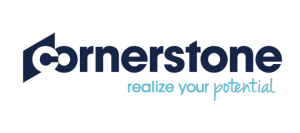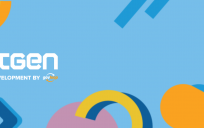“Did you know that approximately 10,000 people will retire each day? This means 43 percent of the current workforce will retire in the next decade,” stated Steve Dobberowsky, Principal, Thought Leadership & Advisory Services at Cornerstone.
There are many challenges that agencies face today, such as shrinking budgets and the Baby Boomer retirements. So, how are HR professionals adopting a talent management strategy that will drive positive results in this day and age?
In a recent GovLoop online training, An Agency’s Journey to Unified Talent Management, we heard from Dobberowsky and Bill Taylor, Solution Architect, Strategic Solutions at Cornerstone. Cornerstone helps organizations to recruit, train, manage and connect people across your organization. They discussed how the workforce is rapidly changing and the challenges and solutions that HR professionals are dealing with.
First, let’s define unified talent management. UTM is a tool designed to enable powerful insight and decisions by combining all facets of talent management. This platform can ensure the ability to combine data between modules and give back real insight so you can make a more informed decision. UTM is important to talk about because of the retirements agencies are about to face. These tools will help you recruit and retain the huge numbers of millennials in or about to be in the workforce.
According to the data Cornerstone has gathered, there are five generations in the workforce. 26 percent are Baby Boomers, who are looking to retire. There is 29 percent of generation Y – a.k.a. millennials – that are working and will be the future of your workforce. “By 2025, Gen Y will make up roughly 75 percent of the workforce,” said Taylor. This is a concern for many agencies, especially trying to fill those roles with good talent. The generations in between include Generation X who take up 17 percent, Generation Next who take up 14 percent, and Traditionalists who take up 15 percent. As you can see, Gen Y is a big part of today’s workforce.
Good talent is hard to find and once you find it, the work doesn’t end there: You still have to retain employees through engagement. “Employee engagement is the extent to which employees are willing to expend discretionary effort to achieve an organization’s objectives, which translates into measurable performance,” according to the Saratoga Institute.
So how do you increase your employee engagement? There are three factors to have a positive organizational impact – communication, trust and transparency. These three factors affect both new and current employees.
Cornerstone research revealed that when companies made employee engagement a priority, they were able to raise productivity, had a better alignment strategy, and saw improved performance of middle and senior management.
Additionally, reinforcing your mission and having a vision for the future is what will help you lay down the foundation to have a unified talent management strategy. While going through the process of recruiting new talent, remember to engage with the new and current employees for improvement in your agency.
For more information about human resources, take a look at the wealth of resources here.






Leave a Reply
You must be logged in to post a comment.